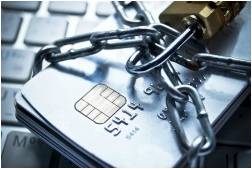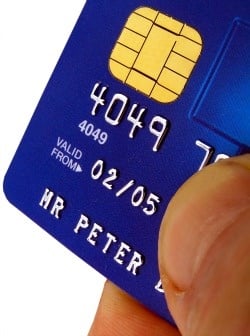So far so good? EMV's Impact on Credit Unions
 Last year at this time, news feeds for credit unions featured information about the Chargeback Liability that was taking place in October of 2015. Among the highlights were the importance of educating your members on chip technology and deciding when to issue chip enabled credit cards. Not to disappoint, new deadlines were set for October of this year that have received similar attention. The new deadline for ATMs to accept EMV chip cards from MasterCard is set for October 2016. Before the details, here's a look back on how EMV has impacted credit unions in the past 10 months.
Last year at this time, news feeds for credit unions featured information about the Chargeback Liability that was taking place in October of 2015. Among the highlights were the importance of educating your members on chip technology and deciding when to issue chip enabled credit cards. Not to disappoint, new deadlines were set for October of this year that have received similar attention. The new deadline for ATMs to accept EMV chip cards from MasterCard is set for October 2016. Before the details, here's a look back on how EMV has impacted credit unions in the past 10 months.
10 Months: Contradictions, Confusion and Frustration
As of May 2016, MasterCard and Visa delivered what seemed to be promising news on the adoption of EMV. MasterCard reported 68% of its credit cards were chip enabled, and 1.4 million merchant locations were accepting the cards. Visa reported 300 million chip cards of theirs being accepted at 1.2 million locations. However, The Aite Group, a global research and advisory firm, estimates that only 20% of U.S. credit card transactions and 10% of debit transactions are occurring today with the pairing of a chip card and chip-enabled terminal.
From the merchant's perspective, the National Retail Federation reports that 48% of responding retailers had already implemented EMV or were expected to have done so by the end of June and that 86% expect to have systems up and running by the end of 2016. The push for quicker adoption by retailers is believed to be a result of reported dramatic increases in chargebacks they are getting hit with, blamed on EMV chip cards being used at non-EMV POS terminals. For retailers who have not upgraded terminals, there is growing concern over the risk of chargebacks, and some larger retailers (Home Depot) have brought up lawsuits against Visa and MasterCard.
Not to confuse matters worse, but as of July 22, credit unions and other card issuers may find themselves liable for merchants that still haven’t migrated to EMV. CreditUnionTimes is reporting that Visa will begin blocking all U.S. counterfeit fraud chargebacks of less than $25. With American Express following suit with a similar policy by the end of August.
How is this impacting fraud (the real reason we are here to begin with)?
And while these findings seem to indicate that credit unions are hitting the merchants with more chargebacks, as they should be per the EMV chargeback liability shift "rules," MasterCard is touting that fraud is down, claiming a 27% decrease in January 2016 compared with January 2015. Then again, as predicted, the aforementioned Aite Group report estimates that online and other card-not-present fraud will rise dramatically and cost U.S. retailers and financial institutions $7.2 billion by the end of 2020.
Retailers for their part seem to understand that EMV is necessary, whether it's because of the increased security they are seeing or due to the increased number of chargebacks they are getting is debatable. Many however, backed by the National Retail Federation, are pushing back at card issuers for chip-and-PIN cards instead of chip-and-signature cards. Their motives are questionable, whether they want some reprieve on the chargebacks, or if they are truly concerned with the added security a PIN will bring.
And What about ATM's?
The next deadline to hit the payment card industry in October will have a greater impact on credit unions through the use of ATMs and MasterCard branded cards. The liability shift deadline for ATM transactions made with MasterCard branded debit and credit cards is Oct. 1, 2016 (Visa's deadline is not until Oct. 1, 2017). However, since nearly all ATMs in the United States accept both Visa and MasterCard, the 2016 date might still apply. As in the October 2015 case, a liability shift is not a mandate; ATM providers and acquirers are not being forced to migrate to EMV. However, the liability shift provides a very strong practical incentive to do so.
Download our EMV FAQs to learn more about the upcoming EMV shift and how it may impact your credit union.



